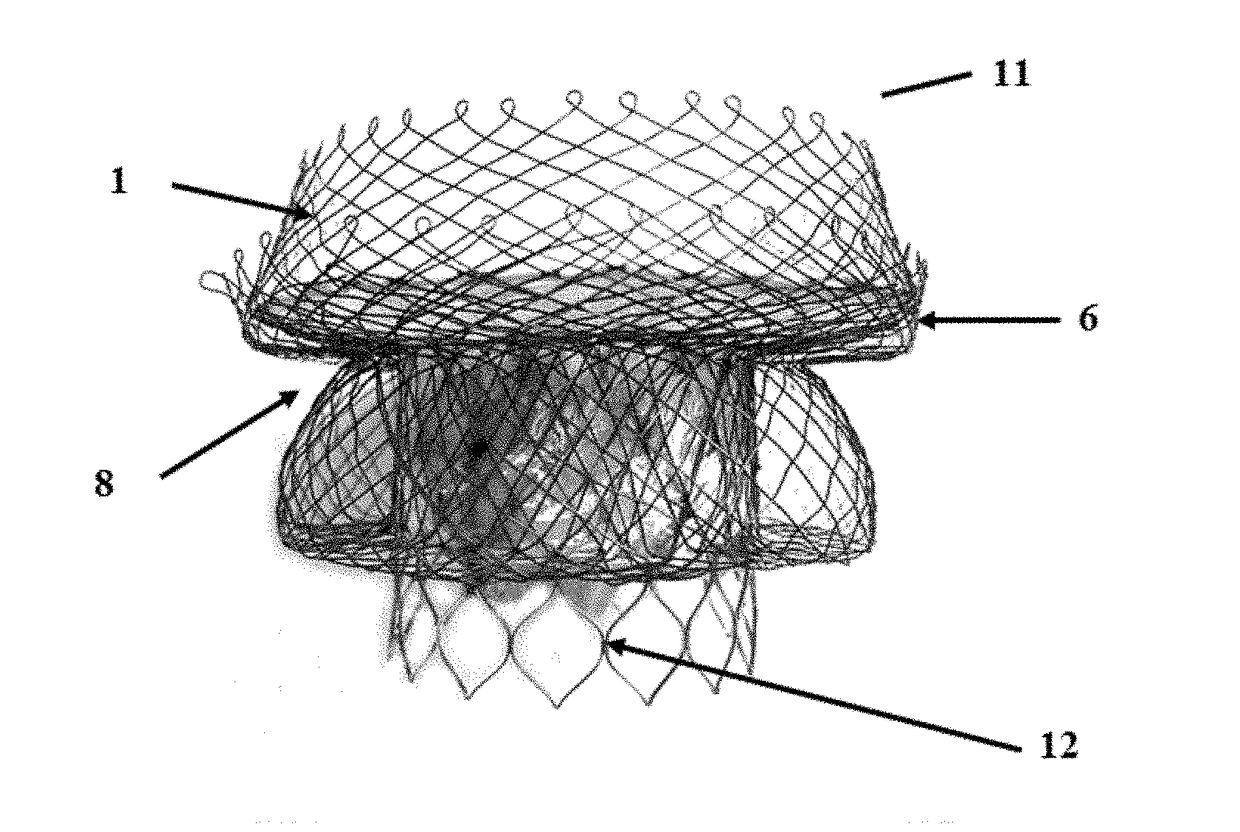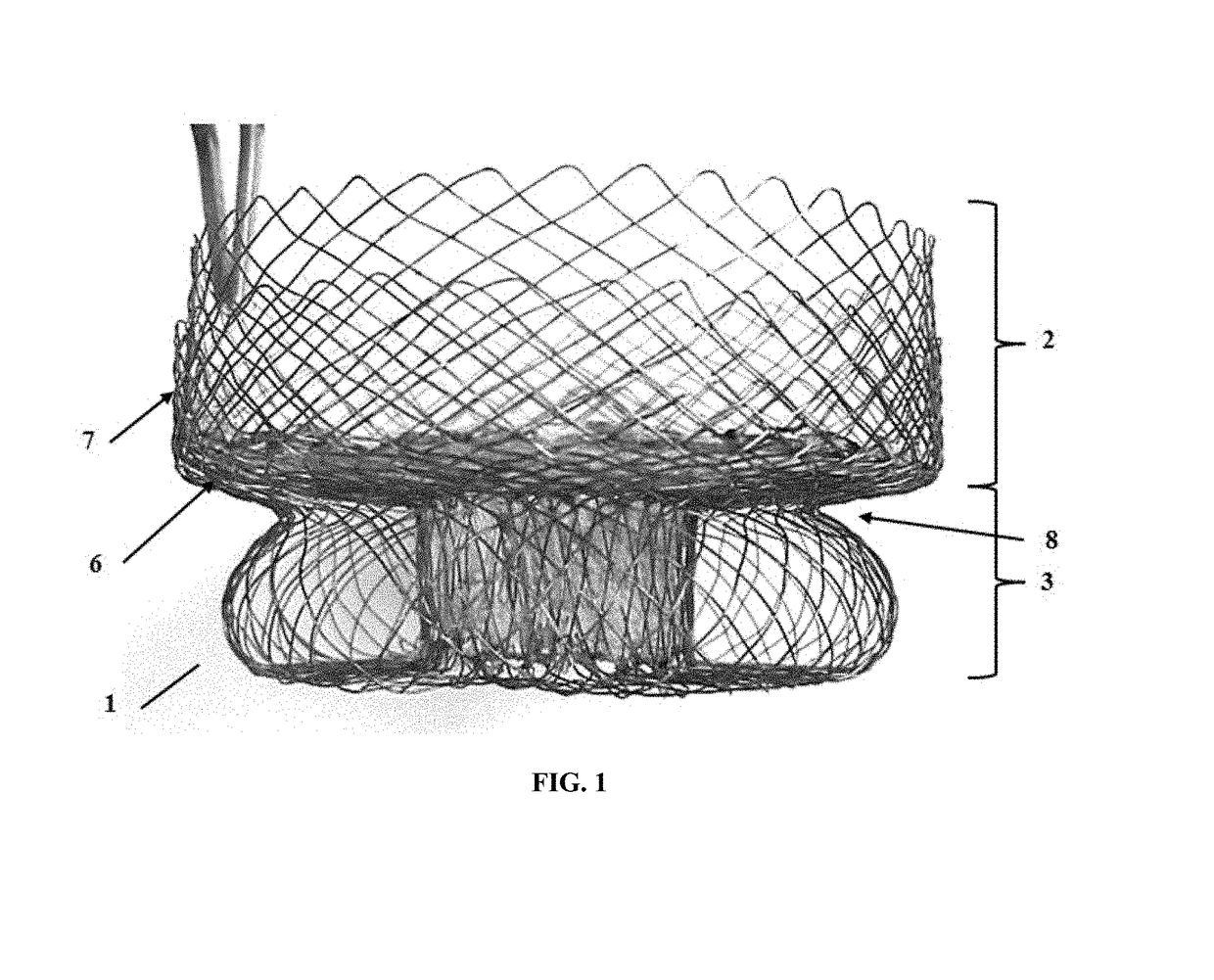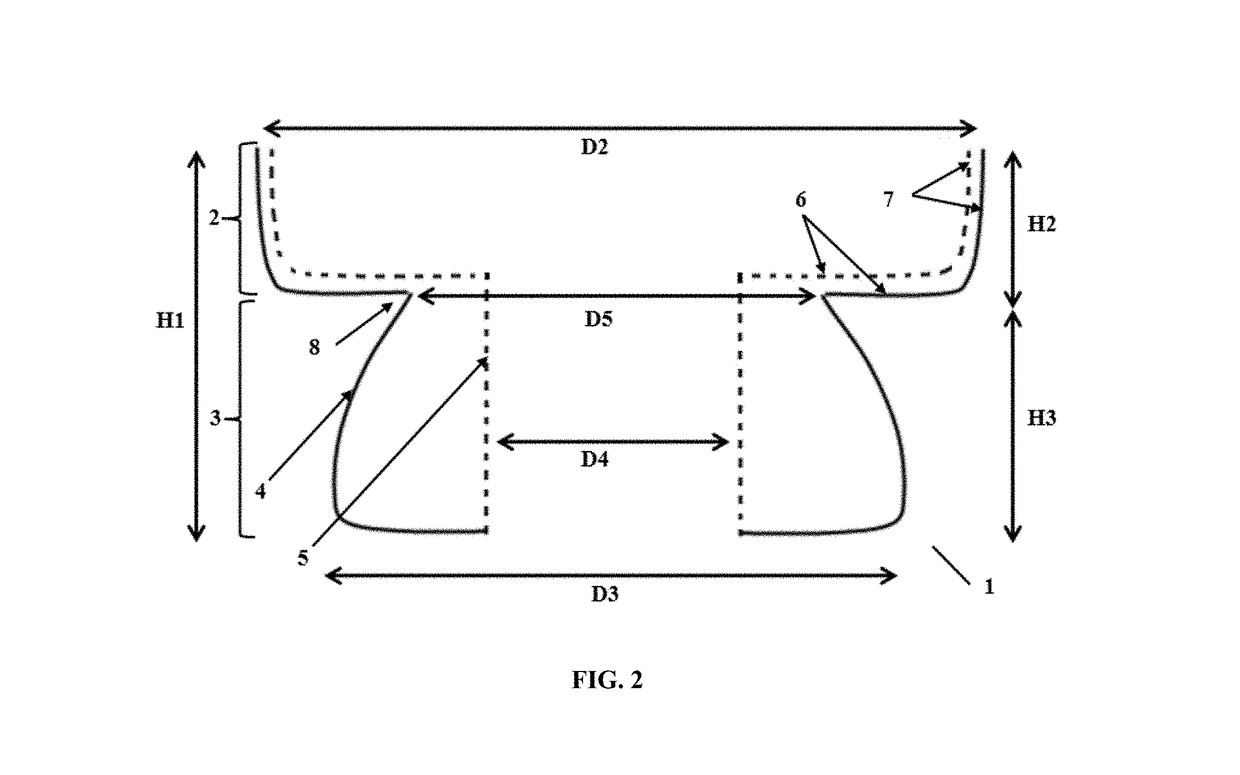Heart valve anchoring device
a heart valve and anchoring technology, applied in the field of anchoring devices for heart valves, can solve the problems of abnormal blood leakage, difficult design and size of prosthetic heart valves having the ability to conform to heart annulus, and additional problems for patients, and achieve the effect of stable cross-section and high stiffness
- Summary
- Abstract
- Description
- Claims
- Application Information
AI Technical Summary
Benefits of technology
Problems solved by technology
Method used
Image
Examples
Embodiment Construction
[0091]The following detailed description will be better understood when read in conjunction with the drawings. For the purpose of illustrating, the anchoring device and the anchoring system are shown in the preferred embodiments. It should be understood, however that the application is not limited to the precise arrangements, structures, features, embodiments, and aspect shown. The drawings are not drawn to scale and are not intended to limit the scope of the claims to the embodiments depicted.
[0092]The present invention provides system, device and method to treat heart valve diseases of a mammalian body, preferably a human body.
[0093]The present invention relates firstly to an anchoring device designed for implantation of a prosthetic heart valve in a mammalian heart, preferably a human heart.
[0094]Referring to the drawings, FIG. 1 illustrates an anchoring device 1 made from a, preferably one single, flexible, compressible and expansible mesh and comprising an extraventricular part...
PUM
 Login to View More
Login to View More Abstract
Description
Claims
Application Information
 Login to View More
Login to View More - R&D Engineer
- R&D Manager
- IP Professional
- Industry Leading Data Capabilities
- Powerful AI technology
- Patent DNA Extraction
Browse by: Latest US Patents, China's latest patents, Technical Efficacy Thesaurus, Application Domain, Technology Topic, Popular Technical Reports.
© 2024 PatSnap. All rights reserved.Legal|Privacy policy|Modern Slavery Act Transparency Statement|Sitemap|About US| Contact US: help@patsnap.com










